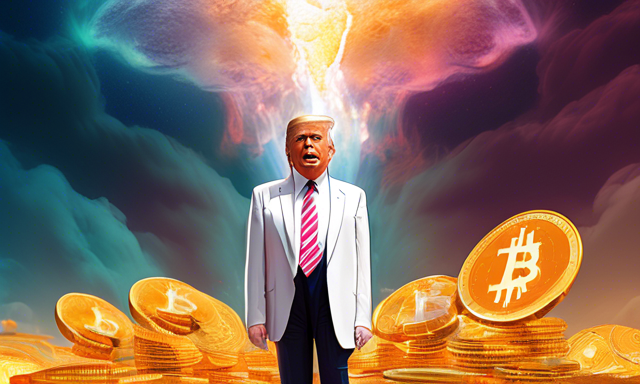Bitcoin Price Predictions Following Trump’s Election Victory 🎉
Recent insights from JP Morgan shed light on potential Bitcoin (BTC) price movements after Trump’s election triumph. The bank’s analysis links various asset performances, including Bitcoin and gold, with shifts in political dynamics over the next year. As 2024 approaches, Trump’s economic policies may set the stage for notable changes in the financial landscape.
JP Morgan’s Optimistic Outlook on Bitcoin (BTC) 🚀
JP Morgan analysts have adopted a bullish perspective on Bitcoin. They foresee sustained momentum leading into the final weeks of this year, drawing parallels to the post-election impact observed in 2016. Analysts suggest that the upcoming eight weeks could replicate the historical performance known as the “Trump trade,” cautiously optimistic about Bitcoin’s potential trajectory.
This concept of the “Trump trade” stems from an analysis within their report correlating Bitcoin’s performance with that of gold following electoral outcomes. Analysts believe that Trump’s future policies may support both assets until 2025, particularly as international trade risks and tariffs elevate concerns around devaluation.
The prevailing sentiment within the cryptocurrency community echoes this viewpoint. After U.S. presidential elections, historical trends indicate a decline in the dollar’s strength, which often aligns with rises in Bitcoin’s price.
The Influence of Trump’s Policies on Bitcoin Pricing 💼
JP Morgan perceives Trump’s economic strategies as somewhat experimental, especially since he previously governed from 2017 to 2020. Current market optimism surrounds the potential for deregulation and anticipated tax reductions, with investment sectors believing that various industries, notably finance and cryptocurrencies, could experience benefits.
As this economic experiment unfolds, many economists anticipate potential adverse effects on broader growth and employment rates. Therefore, while finance and cryptocurrencies may enjoy a favorable climate until year-end, longer-term projections indicate potential challenges for the overall economy.
Trump’s financial influence could extend beyond this year, as he will officially reclaim the presidency on January 20, 2025.
Analyzing Bitcoin Price Predictions 📊
JP Morgan’s optimistic forecasts regarding Bitcoin’s price align with predictions from various analysts. Many believe there’s an underlying connection between the price movements of Bitcoin and the Dollar Index (DXY).
It’s essential to clarify that this relationship is not straightforward. It tends to manifest over medium to long-term periods, as shorter times may exhibit different behaviors or even reverse correlations. Over extended durations, when the Dollar Index declines, Bitcoin’s value commonly appreciates, and vice versa.
The Dollar’s Potential Weakening 💸
Several bullish Bitcoin forecasts hinge on the anticipated weakening of the U.S. dollar. Traditionally, following presidential elections, the Dollar Index tends to decline over several months.
In the run-up to the elections, the index strengthened, climbing from 100 to 104.5 points within just over a month. Although it reached a peak of 105.3 points on the day of Trump’s victory, this increase appeared to be a fleeting spike and does not signify a sustainable upward trend.
Currently resting at 104.5 points, the index has not yet shown signs of decline. Historically, notable downturns began months post-election—in 2016, for instance, the downturn started in December, more than a month after Trump’s last victory. During the height of the cryptocurrency bull market between 2017 and 2018, the index fell from 103 to 89 points, with another decline observed in 2020 down to approximately 90 points. Speculation suggests that we might see similar patterns as 2025 approaches.
Understanding the Bitcoin Cycle 🔄
It’s worth noting that both U.S. presidential elections and Bitcoin follow a four-year cycle. In total, Bitcoin has experienced four halving events—2012, 2016, 2020, and 2024—coinciding with election years.
While the synchronization may seem coincidental, it’s likely there’s a purpose behind this timing, originally determined by Satoshi Nakamoto. Halving reduces Bitcoin’s inflation rate, and the timing does not appear random considering its historical context. The decrease in Bitcoin’s supply coupled with the potential weakening of the dollar post-election establishes a unique scenario where these competing forces enhance Bitcoin’s market value.
With these dynamics, one can anticipate that the interplay between reduced supply and increasing demand could continue to shape Bitcoin’s future performance in a significant way. This framework reinforces the potential for value growth within the cryptocurrency space.
Sources: JP Morgan Report





 By
By


 By
By

 By
By